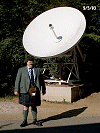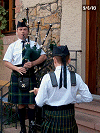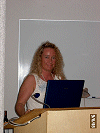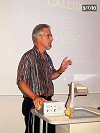|
Marko Cebokli, our volunteer Regional Coordinator for Slovenia, reported on his attempted reception of the 1 Watt telemetry beacon from the Mars Global Surveyor spacecraft, at a distance of 56 million kilometers, during the closest approach of Mars to Earth just one week prior. Because the expected signal was at a signal to noise ratio of about -9 dB in a 1 Hertz bandwidth, any detection will require post-reception processing (not yet completed), involving integration of about 100 samples, each one second in duration.
| | SETI League photo |
|  |




























 SETI League Photo Gallery
SETI League Photo Gallery